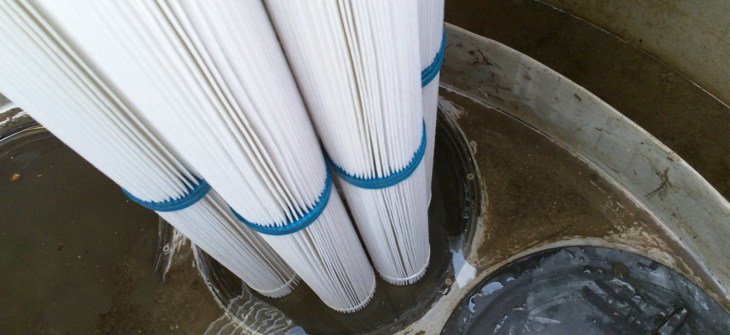
Media Filtration vs. Membrane Filtration: What’s the Big Difference?
Comparing Media and Membrane Filtration in Stormwater Treatment Systems
Stormwater regulations are calling for an increased level of treatment. This often takes the form of filtration systems. Two types of filtration systems used in stormwater are media filtration and membrane filtration.
Media Filtration systems function through physical capture of pollutants, as well as adsorption of pollutants through chemical reactions. Typical media-based filtration systems are composed of sand, stone, organics, or other materials. The media utilized is typically chosen to target specific pollutants for removal.
Media filters work in two basic ways. First, stormwater passes over and through the media. Pollutants become trapped in the voids between media particles, as well as on media particle surfaces themselves. The second way in which media filters remove pollutants from stormwater is through chemical reactions and adsorption. Adsorption occurs when a pollutant is removed through chemical or molecular actions. This is known as cation exchange. The cation exchange process is most commonly utilized in media filters targeting nutrient and metal removal. It is important to understand the pollutant removal goals for a project and select the appropriate media gradation and composition to promote successful removal.
Membrane Filtration employs a thin, permeable layer or sheet of material which stormwater passes through to remove impurities and targeted pollutants. The primary removal mechanism in membrane filtration is the physical blockage of particles by the membrane material. Secondary removal mechanisms include the removal of substances that are attached to the particles captured during the primary removal process.
Membrane filters are designed and manufactured using a variety of materials. Generally, a material is selected based on two key factors: pore size and durability. Pore size refers to the size of the “holes” or “gaps” in the membrane material. The smaller the pore size, the smaller the particle that will be blocked from passing through the membrane filter. Durability refers to the ability of the membrane to function and withstand the conditions to which it is exposed.
In stormwater applications, it is critical that any membrane filter be capable of withstanding the impacts of water, sediments and sands, metals, nutrients, and hydrocarbon based materials/substances. When a membrane filter is new, particles that are smaller than the pore size will pass through the filter. As the membrane begins to capture particles that larger than the pore size, it begins to “ripen.” As a membrane ripens, the pore size available for filtering decreases, and smaller particles are captured. A membrane filter fails when stormwater no longer passes through it, or when the rate of water passing through it (flux rate) is less than the filter design flow rate.
As today’s stormwater regulations continue to press upon land owners to provide stormwater runoff treatment, there as proven filter technologies that provide high-level standalone treatment, volume-based treatment, as well enhanced pre-treatment to green solutions. Check out Contech Engineered Solutions media and membrane filtration solutions at www.conteches.com/jellyfish and www.conteches.com/stormfilter.
